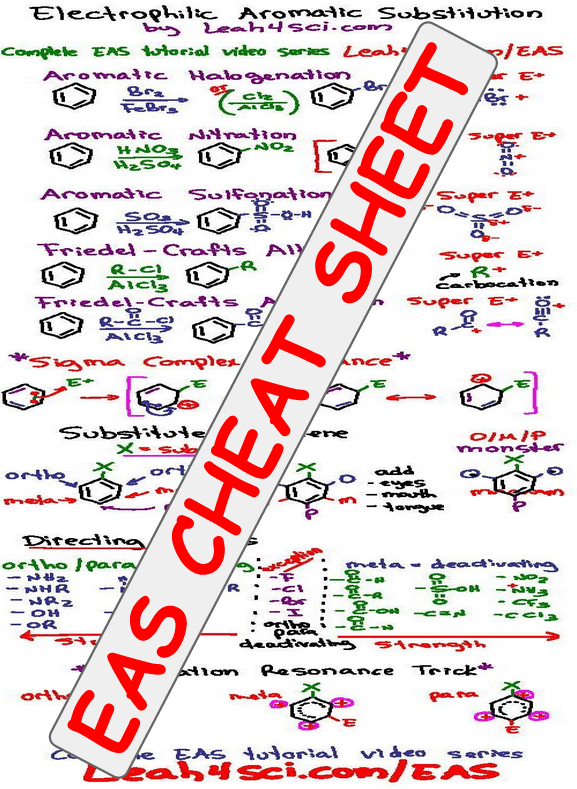 Electrophilic Aromatic Substitution reactions are one of the more fun topics that you will study in Organic Chemistry. But perhaps you find it tricky due to the sheer volume of information that makes up the big picture. And so, in addition to my EAS Tutorial Video Series I've put together a thorough EAS cheat sheet. Click the image for a high resolution copy, and print one each for your textbooks and notebooks.
Electrophilic Aromatic Substitution reactions are one of the more fun topics that you will study in Organic Chemistry. But perhaps you find it tricky due to the sheer volume of information that makes up the big picture. And so, in addition to my EAS Tutorial Video Series I've put together a thorough EAS cheat sheet. Click the image for a high resolution copy, and print one each for your textbooks and notebooks.
The cheat sheet took a few hours to complete, and so I would appreciate if you click the social sharing buttons above to show your appreciation (assuming you find it helpful of course 😉
Enjoy



